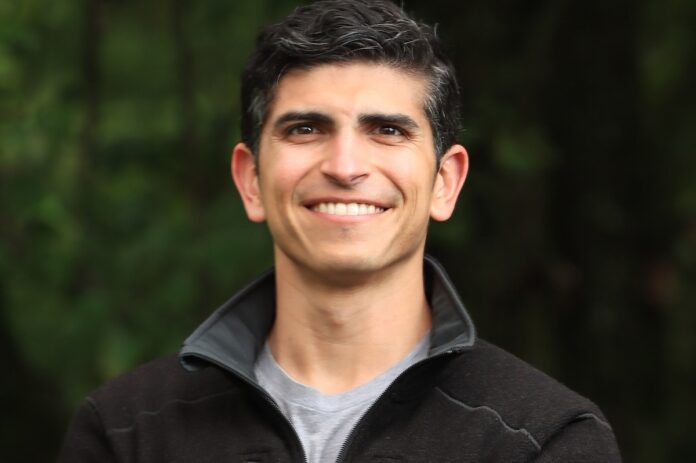Hightag, a company specializing in automated media capture technology for action sports athletes, will be presented by CEO Alex de la Fuente at the Global Media Pitch Day during #MTHCON24
How did you come up with the idea for Hightag, and what inspired you to focus on sports technology for athletes like mountain bikers and skiers?
Actually, my brother Jonathan, Hightag’s Chief Technology Officer and an ardent photographer, originally came up with the idea. We both grew up skateboarding, snowboarding, mountain biking… etc. Media capture and sharing is an enormously important part of these action sports, and we’d often take turns photographing or filming each other. After a snowboarding trip in early 2020, just before the COVID-19 outbreak, Jonathan began developing an automated camera system for our own use. Once travel restrictions had lifted, I visited Jonathan again for a mountain biking trip, and I got to try out the prototype device he had built. I was blown away—I remember thinking that I had just glimpsed the future of action media.
Can you explain how Hightag’s technology works and how it allows athletes to capture footage of themselves while in action?
We partner with mountain bike parks, ski areas, skateparks, and other action sport destinations to install Hightag’s cameras at key points. These cameras are triggered using radio frequency identification (RFID) technology. Each of our users wears a unique RFID tag while they ride, which is linked to their Hightag account. As the user rides past a Hightag camera, their tag triggers the camera to capture a photo/video and also signals the appropriate user account to receive the captured media.
What sets Hightag apart from other sports technology products on the market that offer similar features for athletes?
Frankly, there are very few products out there that deliver such a solution for this market. That’s not to say that there aren’t other wirelessly triggered camera solutions—there certainly are. However, very few of these are equipped to survive in the harsh and/or remote locations where many action sports (particularly downhill mountain sports) take place, and even fewer are designed as a comprehensive solution for athletes. Rather, many such products are offered as a sort of “automated souvenir photo business in a box” for family attraction centers and theme parks.
What challenges did you face in developing Hightag’s technology, and how did you overcome them?
We’ve faced so many challenges throughout the development of Hightag’s technology that I couldn’t easily or concisely describe them. If you think about it, our system comprises wireless communication technologies, camera hardware and post-processing software, electrical engineering and power management systems… the list goes on. I wouldn’t even say that we’ve finished overcoming them. In fact, in our pursuit to deliver an increasingly “magical” experience for the athletes we serve, I don’t expect we’ll ever run out of technological challenges.
How does Hightag enhance the experience of athletes, and what feedback have you received from users so far?
For the first time, athletes are given the power to autonomously capture footage of themselves in-action. We’ve seen how powerful this can be for athletes, both in helping them chronicle their achievements and review their performance so they can improve. Many of our users have simply never been able to capture or see action footage of themselves, and are awed by how easy Hightag makes it. In fact, the feedback we hear most frequently from our users is that they want to see more cameras installed at more of their favorite places… we’re working on it!
As you continue to innovate, what new features or updates can we expect to see from Hightag in the future?
I won’t give away specifics, but I’ll say this: we want our users to feel as if Hightag is a magical, dedicated cameraman that is delivering the best possible action shots while capturing their entire experience wherever they ride. As we’ve only just begun, there are many updates and enhancements ahead of us, and I’m so excited for our users to see these become reality over the coming months.
In a competitive sports technology market, how do you plan to expand Hightag’s user base and reach new customers?
Globally, there are hundreds of millions of action sport participants (mountain bikers, snowboarders, skiers, skateboarders, BMX riders, etc.). We tend to segment these by three dimensions: sport, region, and athlete profile. Today, we’re acutely focused on one intersection of those dimensions. We’ll begin by expanding regionally, before expanding within currently addressed sports and to new sports entirely. We also believe there is applicability beyond action sports for Hightag’s solution. Ultimately, we’re giving people a way to autonomously capture media of themselves doing what they love—there are many markets that could use such a solution.
How do you envision Hightag being used in professional sports or even extreme sports competitions?
It’s an interesting question, since professional competitions are typically recorded or broadcasted by professional crews. I don’t expect Hightag will ever replace that. However, as we do for amateurs, Hightag can help professionals document their activities that aren’t televised: training sessions, minor events, etc. Especially in this day and age, maintaining social media activity is an increasingly important part of being a professional action sports athlete—arguably more so than winning competitions.
How important is athlete safety in the development of Hightag, and how does the product ensure that athletes can capture footage without compromising their performance?
For exactly this reason, we made a decision early on to make our cameras as minimally invasive and noticeable as possible. In some cases, users may even know exactly where the cameras are—only that the trail or slope they are riding on features Hightag cameras. It’s actually part of what our users love about the service: after signing up, they can enjoy their ride as they normally would while counting on Hightag to capture their highlights.
As the CEO of a sports technology startup, how has the local ecosystem supported the growth of Hightag?
Hightag is based in Bentonville, Arkansas. The community and ecosystem in Bentonville—as well as the state of Arkansas—have been enormously supportive. Even at the very earliest stages, we received help distributing our tags, travel and lodging assistance, promotion via local publications, and so much more. We’ve raised funding from local angel investors and participated in local accelerator programs, and have received guidance navigating the startup support programs offered by the state of Arkansas. There are very few places that would have been a better place to launch and begin growing Hightag.
What role do partnerships or collaborations play in the growth of Hightag, and are there any that you are particularly excited about?
Partnerships and collaborations play an increasingly important role in Hightag’s growth. Beyond collaborating with property managers to install our cameras throughout their facilities, we also work with local community leaders (group ride organizers, coaches, gear and equipment retailers, etc.) to spread the word and distribute tags. We’re also in discussions with a few international brands regarding ways that we can work together to bring Hightag to more destinations while providing an even better experience for our users. Those are certainly opportunities I’m very excited about.
What advice would you give to other entrepreneurs looking to break into the sports technology space?
The advice I would give to entrepreneurs in this industry is the same advice I would give to entrepreneurs in any other industry: develop a deep understanding of your customers and how they operate, and prioritize user experience. I should add that “user experience” is more than just how the product looks and feels—it encapsulates everything from how the business model is designed to how, where, and when a user discovers your solution. I think you can only get those things right if you really understand your customers.
Picture@ Alex de la Fuente
Thank you Alex de la Fuente for the Interview
Statements of the author and the interviewee do not necessarily represent the editors and the publisher opinion again.

















